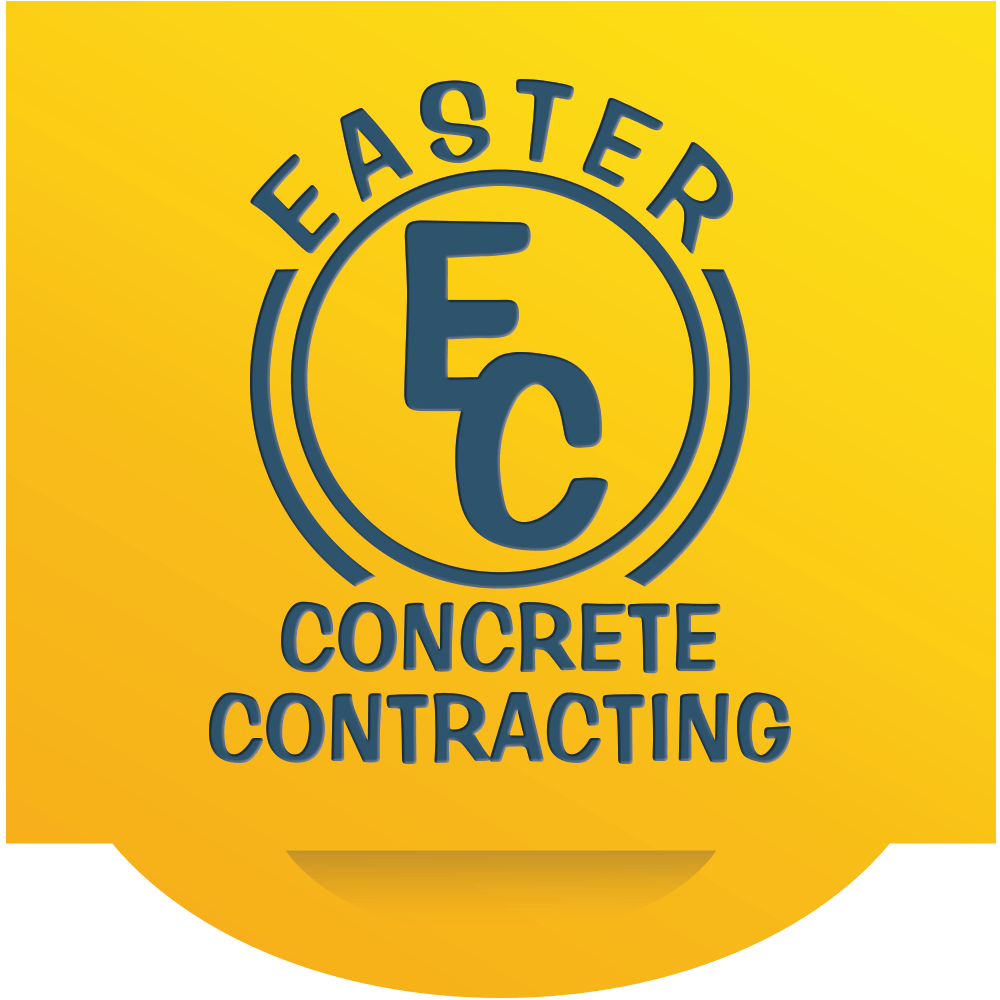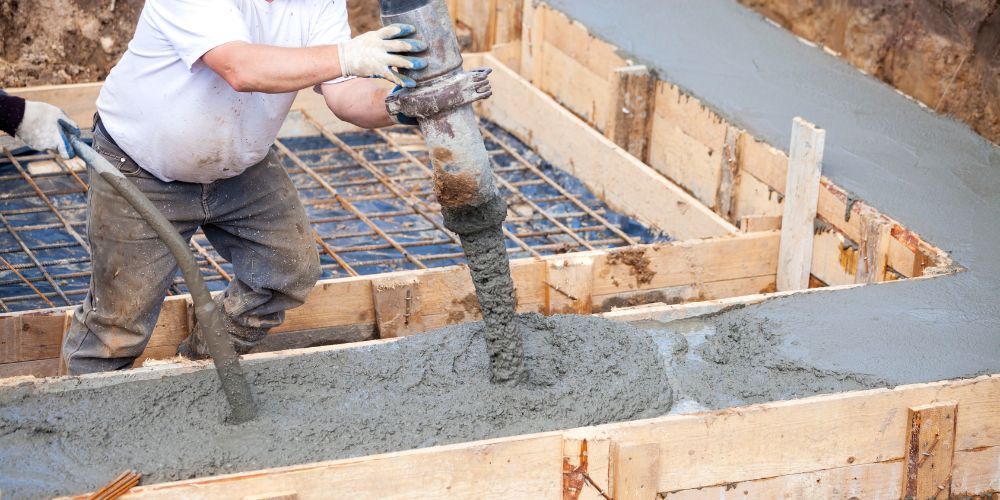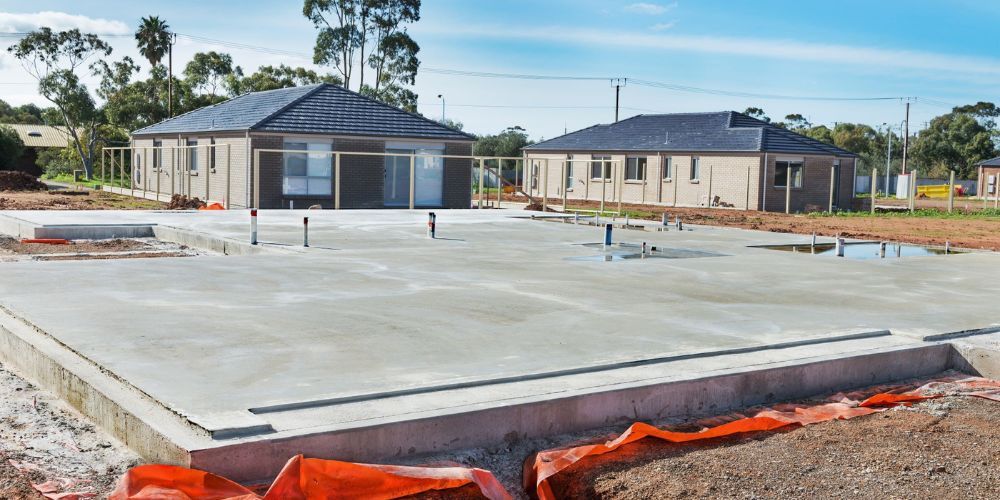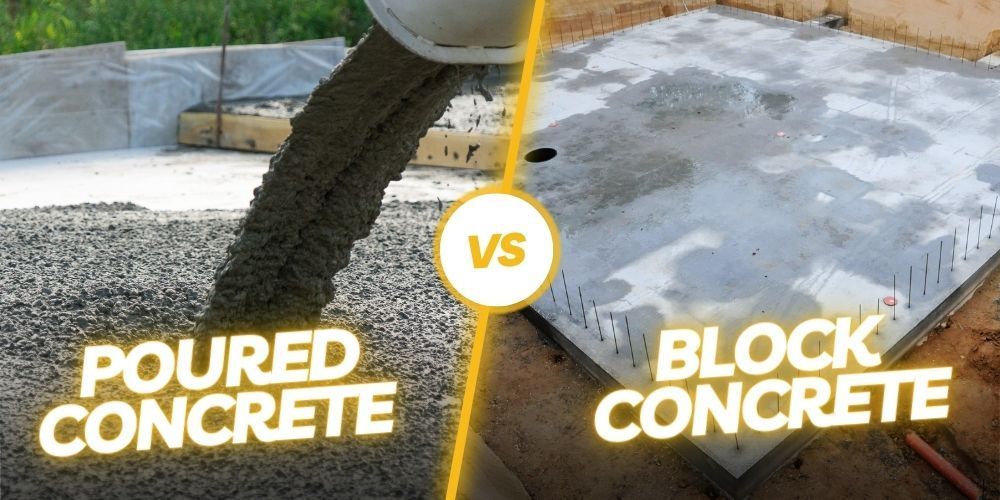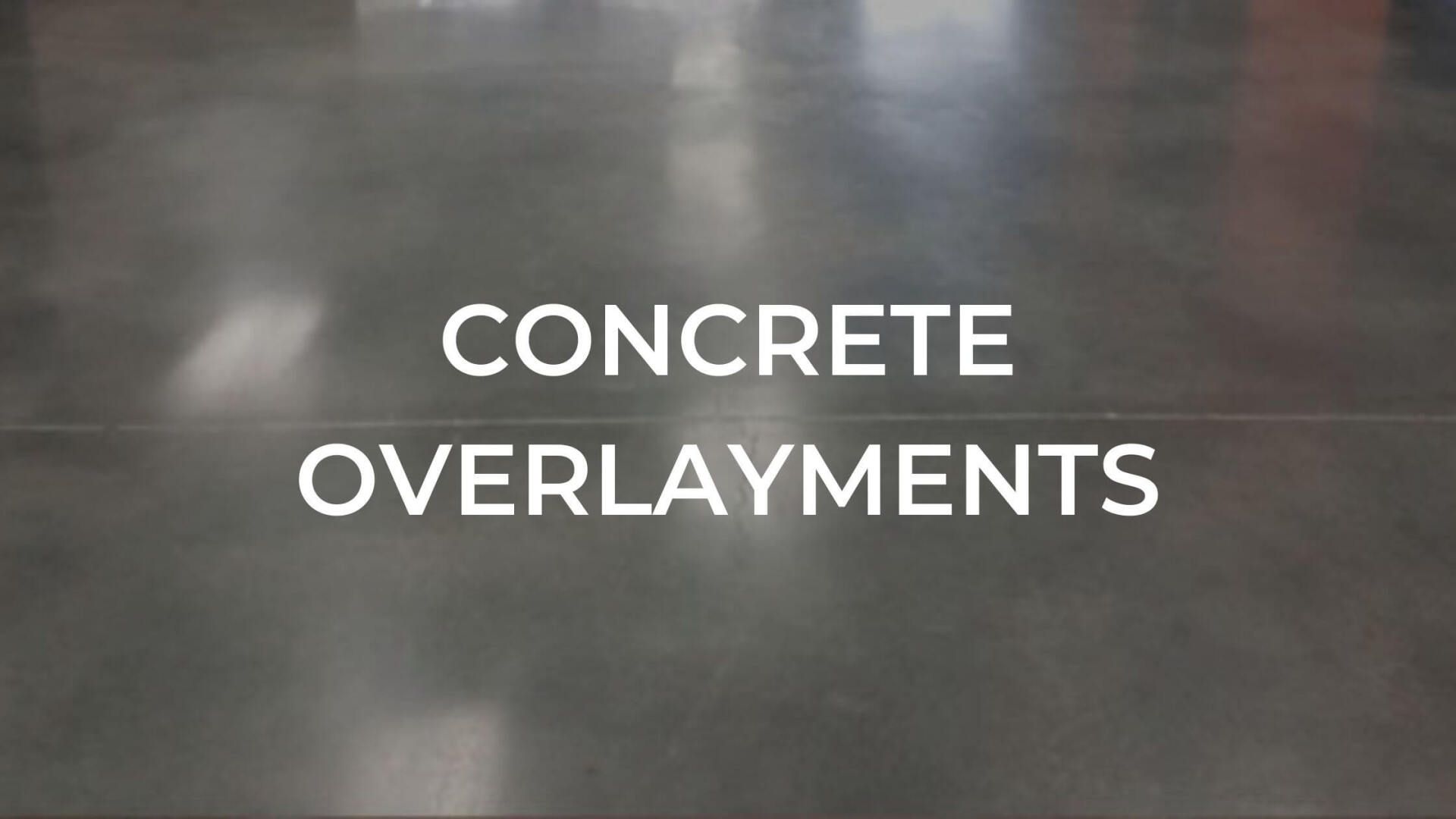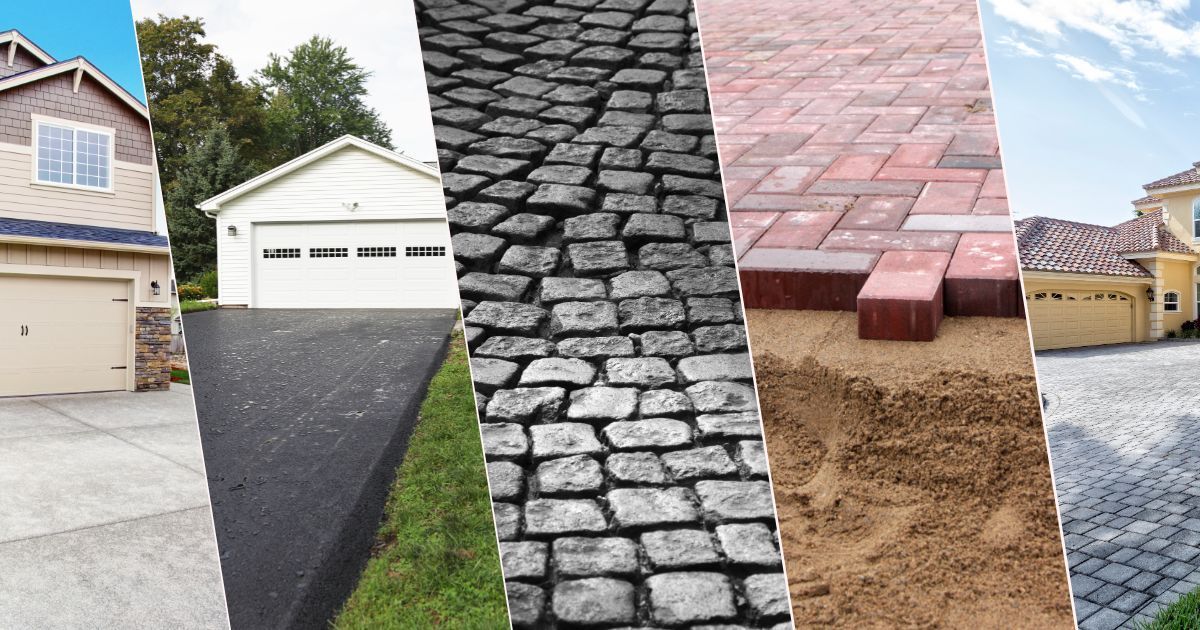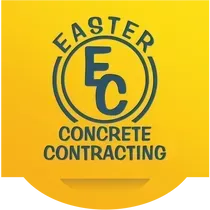Deep Foundations Essential Types and Their Benefits
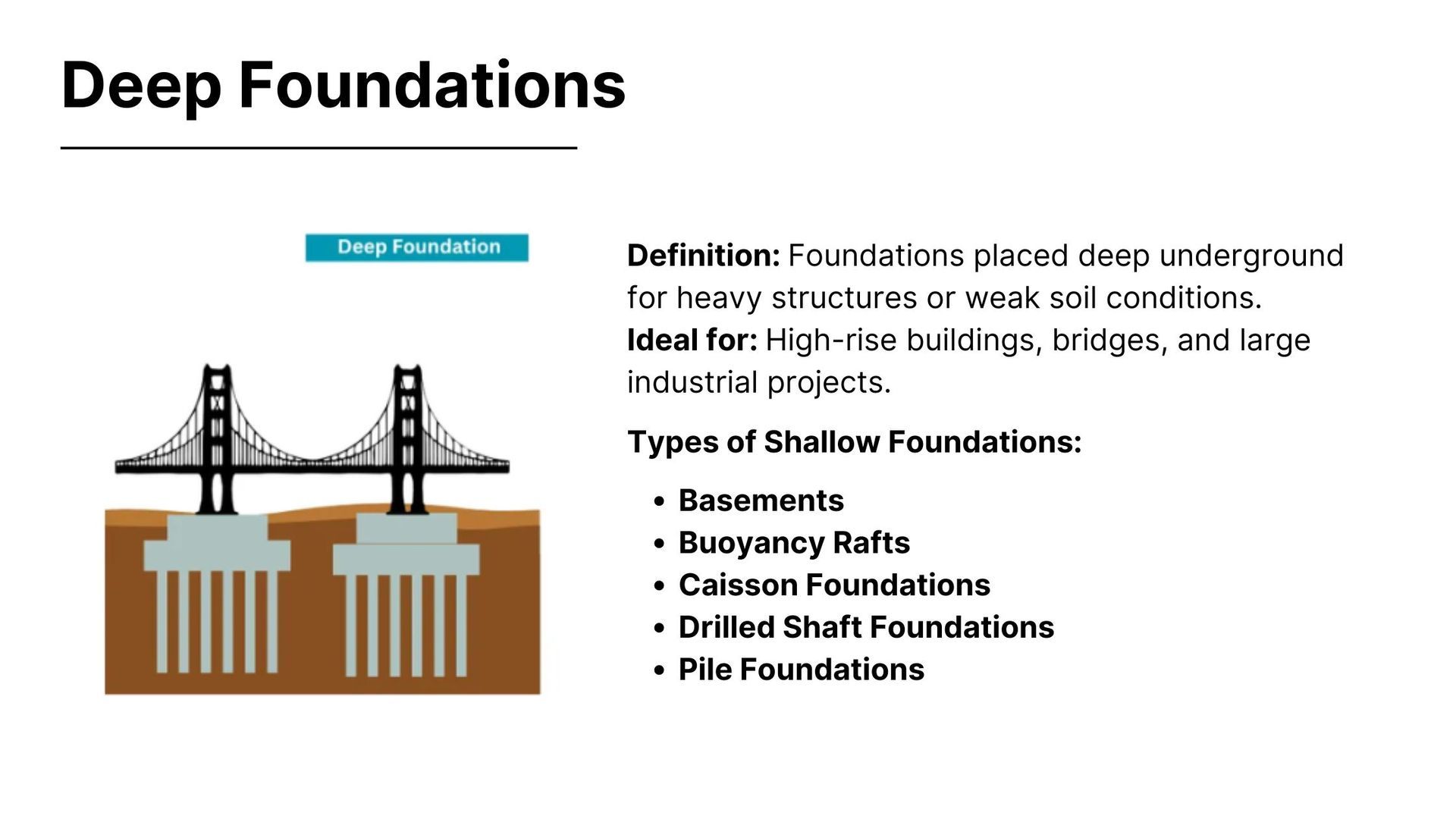
The foundation is the cornerstone of any building. It ensures the overall stability of the structure. For smaller buildings on solid ground, shallow foundations are usually enough. However, larger buildings, skyscrapers, or areas with weak or shifting soil require deep foundations.
In this guide, I’ll explain deep foundations step by step. I’ll cover when they are needed and the different types available. Whether you're building a high-rise tower or a bridge over water, understanding deep foundations will help you make the right choice for your project.
What is a Deep Foundation?
A deep foundation is a structural element that transfers building loads deep into the ground, bypassing weaker surface soils to reach stronger, more stable layers. Unlike shallow foundations, which are only a few feet deep, deep foundations can extend dozens or even hundreds of feet underground.
Key Features of Deep Foundations:
- Designed for large structures like skyscrapers, bridges, and towers.
- Used in unstable or weak soil conditions.
- Requires specialized equipment like drilling rigs and pile drivers.
When Are Deep Foundations Used?
- The soil near the surface lacks the strength to support a structure.
- The structures being built are extremely heavy, such as skyscrapers, industrial plants, and bridges.
- The foundation needs to withstand natural forces like earthquakes, floods, or high winds.
- Construction is taking place over water (docks, piers, or offshore platforms).
Types of Deep Foundations
There are several types of deep foundations, each designed for specific conditions. Let’s explore them:

1. Basements
A basement foundation is a hollow substructure that provides both support and extra space below a building. While basements are commonly used for storage or living areas, their primary function is to distribute the load of the building and resist soil pressure.
- Best For: Residential and commercial buildings.
- Key Benefit: Adds usable space while reinforcing structural stability.
2. Buoyancy Rafts (Floating Foundations)
A buoyancy raft, also known as a floating foundation, is used in areas with extremely soft or weak soil. Instead of resting on the soil, these foundations displace enough earth to counteract the weight of the structure, similar to how a boat floats on water.
- Best For: Areas with unstable or highly compressible soil.
- Key Benefit: Reduces settlement and ground movement.
3. Caisson Foundations
Caissons are watertight, prefabricated structures that are sunk into the ground and filled with concrete. These are commonly used for:
- Bridges, docks, and offshore platforms.
- Projects requiring deep support below water or loose soil.
- Structures needing
high load-bearing capacity.
4. Drilled Shaft Foundations (Bored Piles)
Drilled shafts, also called bored piles, are created by drilling deep holes, inserting reinforced steel, and filling them with concrete. They provide exceptional load-bearing strength and are used in:
- Skyscrapers and bridges.
- Areas with soft or clay-heavy soil.
- Large industrial structures need
reinforced support.
5. Pile Foundations
Pile foundations use long, cylindrical columns (piles) driven deep into the ground. These can be:
- End-bearing piles (transfer load to a solid rock layer).
- Friction piles (distribute weight across their length).
- Bored piles vs. driven piles (installation methods).
Best For: Tall buildings, bridges, and areas with poor soil conditions.
Read Also: How you can protect your foundation against water damage.
Case Study:
Deep Foundation in Skyscraper Construction
Project 1: The Salesforce Tower in San Francisco
- Challenge: Building on soft, earthquake-prone soil.
- Solution: Engineers used drilled shaft foundations, extending over 300 feet deep into bedrock.
- Result: One of the
most stable high-rise structures in an earthquake-prone region.
Challenges and Considerations in Deep Foundation Construction
- Soil Testing – Essential to determine the best foundation type.
- Vibrations – Construction can impact nearby buildings.
- Weather Conditions – Heavy rain or extreme cold can delay curing.
- Corrosion Risks – Metal reinforcement must be protected.
Pros and Cons of Deep Foundations
Pros:
- Stronger load-bearing capacity for large structures.
- Works in any soil type, even weak or unstable ground.
- Understand extreme weather and seismic activity.
Cons:
- More expensive than shallow foundations.
- Longer construction time due to drilling and reinforcement.
- Specialized equipment is required, increasing costs.
Conclusion
Deep foundations are used to transfer building loads deep into stable soil layers. They're necessary for large structures or areas with weak soil. Types include basements, buoyancy rafts, caissons, drilled shafts, and piles.
These foundations are needed when surface soil can't support the weight or when construction is over water or in unstable conditions. While they provide strong support, they are more costly and time-consuming to build.


